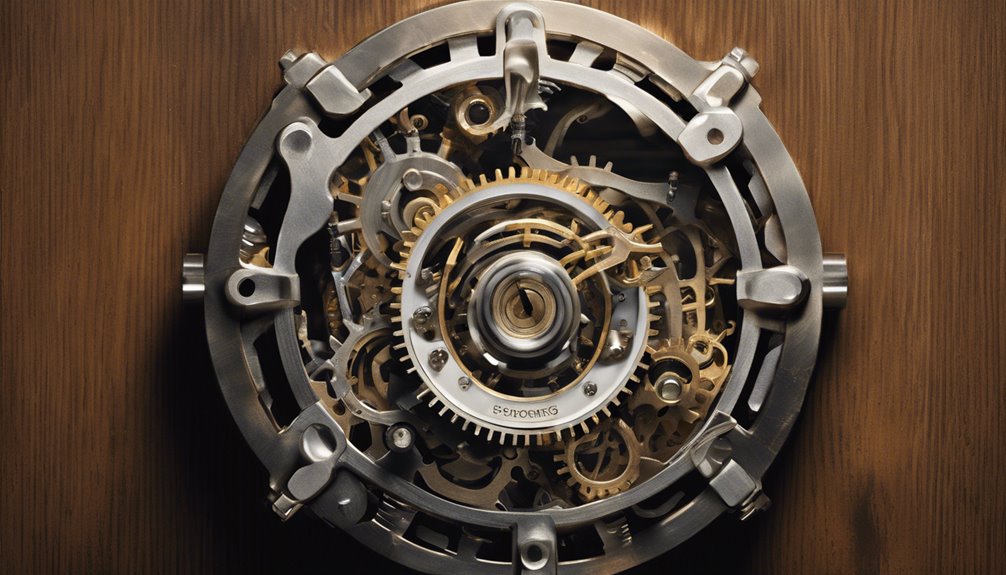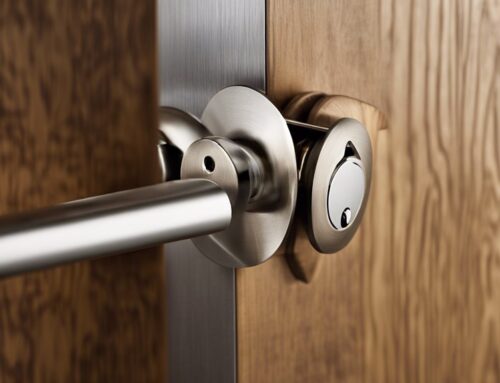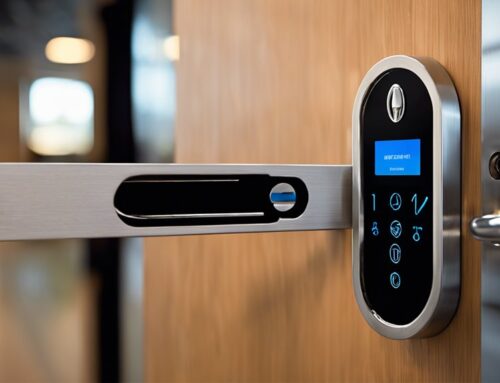Did you know that businesses lose an estimated $50 billion annually due to theft and fraud? With threats like these, understanding how time locks can enhance security isn’t just an option; it’s essential. You might be surprised at the variety of time lock systems available and the unique ways they can protect your assets. However, while they offer impressive benefits, there are also limitations to evaluate. So, what factors should you weigh when choosing the right time lock for your security needs?
Key Takeaways
- Time locks offer precise, scheduled access to secure valuable assets, reducing unauthorized entry risks.
- Mechanical and electronic designs provide robust and programmable security solutions for various environments.
- Implementing time locks enhances accountability by maintaining access logs and tracking personnel movements.
- While effective, time locks can present challenges during emergencies due to strict access control.
- Long-term cost savings from reduced theft risks and lower insurance premiums justify initial investments in time lock systems.
History of Time Locks

While you might think of time locks as a modern invention, their origins trace back to the late 19th century when they emerged as a solution to secure valuables with precision.
Initially designed for banks and high-security environments, these mechanisms utilized intricate gear systems to regulate access based on time intervals rather than merely physical keys.
You’ll find that early designs incorporated both mechanical and gravity-fed components, ensuring a reliable locking mechanism resistant to tampering.
By employing a time-dependent mechanism, these locks not only enhanced security but also eliminated human error in access control.
This historical progression demonstrates a shift towards more sophisticated, layered security strategies, underscoring the importance of time locks in the evolution of asset protection technology.
Types of Time Locks

Time locks come in various configurations, each designed to meet specific security needs.
You’ll find mechanical time locks, which rely on gears and springs, offering robust physical security through mechanical precision.
Then there are electronic time locks that utilize digital technology for enhanced programmability and integration with modern security systems.
Hybrid models combine mechanical reliability with electronic features, allowing for versatile control options.
Additionally, some time locks offer operational flexibility, such as countdown timers, enabling precise release times.
When selecting a time lock, evaluate the type of asset being protected, desired access frequency, and security level required.
Tailoring your choice will guarantee the best safeguarding and mitigation of unauthorized access risks.
Security Benefits

Implementing time locks substantially enhances your security posture by providing a controlled access mechanism that mitigates risks of unauthorized entry.
By restricting access during specified time frames, these systems create an additional layer of security that’s difficult for intruders to circumvent.
Consider the following security benefits:
- Reduced vulnerability: Time locks limit access to critical areas, decreasing the opportunity for theft or vandalism.
- Enhanced accountability: You can track access logs, making it easier to identify who entered specific areas and when.
- Operational flexibility: You can customize access schedules to fit unique operational needs without compromising security.
- Deterrence factor: The visible installation of time locks can deter potential intruders from attempting unauthorized access.
- Strengthened overall security: The integration of time locks with high-security locks can further enhance the protection of your assets against sophisticated intrusion methods.
Economic Aspects

As organizations seek to optimize their security investments, understanding the economic aspects of time locks becomes essential. Time locks, while requiring an initial capital outlay, considerably reduce long-term risks associated with theft and unauthorized access. Additionally, engaging professionals for lock replacement services can enhance the implementation process and ensure reliable performance.
By quantifying potential losses and analyzing the return on investment (ROI), you’ll find that these systems can diminish in value when leveraged effectively. Additionally, time locks can minimize insurance premiums due to lower vulnerability, further enhancing economic viability.
Furthermore, consider the operational efficiency they bring—streamlining access processes while ensuring compliance with regulatory standards. Incorporating smart home integration into your security framework can also enhance overall system effectiveness.
Ultimately, by integrating time locks into your security framework, you can achieve a balanced approach that safeguards assets while yielding ongoing financial benefits.
Limitations and Risks

While time locks offer numerous benefits, they also come with inherent limitations and risks that organizations must consider. Understanding these factors is essential for effective asset management.
- Mechanical Failures: Any malfunction may compromise security and access control.
- Operational Delays: Strict lockout times can hinder business continuity in emergencies.
- Limited Flexibility: In urgent situations, the inability to override a time lock can lead to significant losses.
- Vulnerability to Tampering: Sophisticated attacks may exploit weaknesses in the lock’s design or implementation.
Frequently Asked Questions
How Do I Choose the Right Time Lock for My Needs?
To choose the right time lock for your needs, start by evaluating your security requirements and the specific assets you want to protect.
Evaluate features such as the duration of the lock, usability, and compatibility with your current systems.
Consider data integrity and recovery options as well.
Finally, analyze potential risks and your preferences for security versus accessibility.
With this information, you can select a time lock that best aligns with your goals.
Can Time Locks Be Installed on Existing Safes?
Installing time locks on existing safes is like fitting a precision gear into a well-oiled machine. You can indeed retrofit time locks, but it’s vital to guarantee compatibility with your safe’s locking mechanism.
Assess the safe’s structure and existing lock features before proceeding. Depending on the manufacturer, some models may require specific time lock brands, so always consult detailed specifications or a professional locksmith to guarantee ideal integration and functionality.
What Maintenance Is Required for Mechanical Time Locks?
To maintain mechanical time locks, you must regularly inspect and clean all components.
Lubricate moving parts periodically with appropriate grease to prevent wear.
Check for any corrosion or debris, especially around the gears.
Ascertain the timekeeping mechanism is functioning accurately; this may involve recalibrating occasionally.
Additionally, inspect the lock’s casing for damage.
Keeping a maintenance log will help you track performance and identify potential issues before they escalate.
Regular attention enhances longevity and reliability.
How Do Electronic Time Locks Differ From Mechanical Ones?
Electronic time locks utilize digital components, allowing for remote programming and easier access control compared to mechanical ones.
You can set specific release schedules with precision, while mechanical locks often require manual adjustments.
Electronic models offer features like audit trails and override capabilities, enhancing security and flexibility.
In contrast, mechanical locks rely on mechanical gears and combinations, needing routine maintenance and physical intervention, which can pose risks to overall security and efficiency.
Are There Mobile Apps for Managing Digital Time Locks?
If you’re managing your digital assets like a time traveler diagnosing a glitch in a spaceship, you’ll find there are indeed mobile apps for that purpose.
These apps allow you to create, monitor, and modify digital time locks with precision. They typically incorporate multi-factor authentication, ensuring enhanced security.
Look for features such as real-time notifications and detailed activity logs to maintain oversight.
Mastering these tools can optimize your asset management strategy effectively.
Conclusion
To sum up, time locks offer a compelling blend of precision and protection for securing assets. They create a controlled environment that not only deters theft but also promotes accountability through access logs. While they might face challenges like tampering or mechanical failures, the benefits they provide in safeguarding valuables often outweigh these risks. Ultimately, investing in a time lock can greatly enhance your security strategy, ensuring your assets remain well-protected against unauthorized access.







